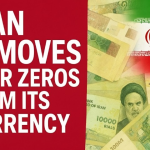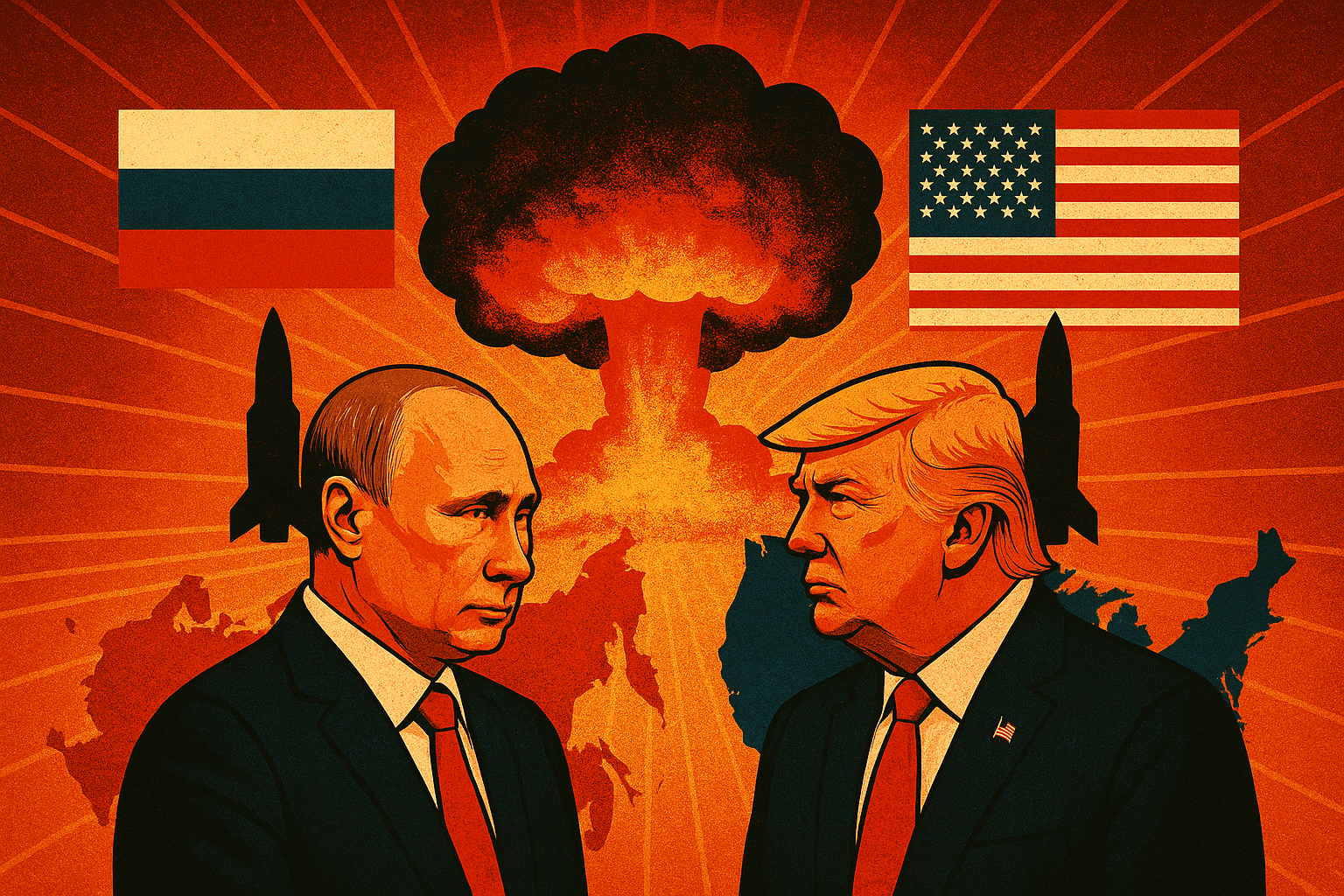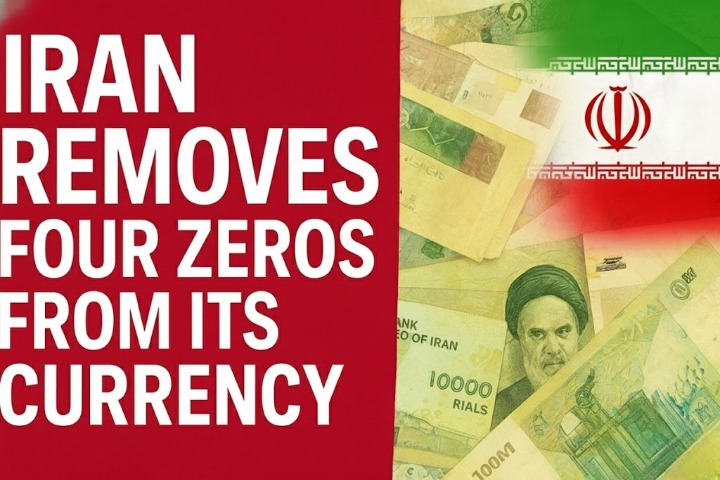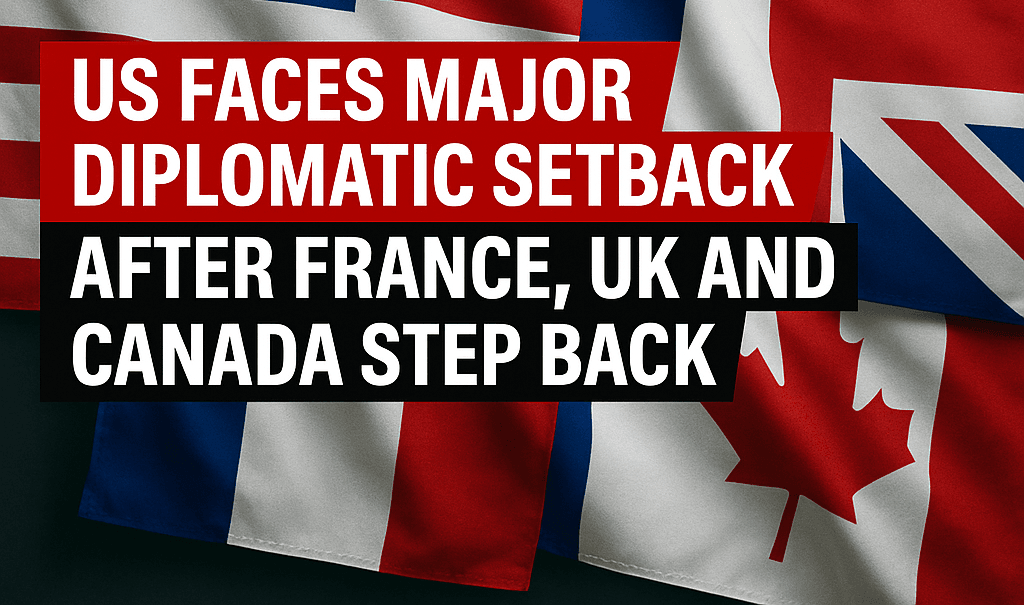🇮🇷 Iran Removes Four Zeros from Its Currency: What You Need to Know
Iran has recently made a significant economic announcement: removing four zeros from its national currency, the rial. This move, approved by the Iranian parliament, is one of the largest currency reforms in decades and aims to simplify financial transactions, improve public confidence, and modernize the country’s economic system.
In this article, we’ll explore the reasons behind the change, how it will be implemented, and its potential impact on everyday life and Iran’s economy.
Background: Why Iran Needed This Reform
For many years, the Iranian rial has struggled under inflation and international sanctions. The currency’s value has declined dramatically, making it increasingly difficult for citizens and businesses to handle daily transactions.
- Prices for everyday items often reached hundreds of thousands or millions of rials.
- Accounting and financial management became cumbersome for businesses and banks.
- The public’s trust in the currency declined, creating additional economic challenges.
To address these issues, the government decided to redenominate the currency. Under the new plan:
- 10,000 old rials = 1 new rial
- The currency will still be called the rial, maintaining historical continuity
- Both old and new currency will circulate during a transition period of up to three years
This change is largely symbolic but necessary to restore confidence and simplify the nation’s financial system.
How the Currency Change Will Be Implemented
Implementing a currency reform of this scale requires careful planning. Here’s what Iran has outlined:
- Transition Period: Both old and new rials will remain valid for three years, giving citizens and businesses ample time to adapt.
- Central Bank Preparations: The Central Bank of Iran has up to two years to update the financial infrastructure, print new banknotes, and adjust digital banking systems.
- Legal Approval: Final approval from the Guardian Council is required before the reform becomes fully operational.
This phased approach is designed to minimize confusion and disruption while ensuring a smooth transition for everyone involved.
What This Means for Ordinary Iranians
For everyday citizens, the reform offers several practical benefits:
- Simpler transactions: No more dealing with unwieldy numbers in the millions. For instance, a loaf of bread priced at 500,000 rials will now cost just 50 new rials.
- Easier accounting: Businesses and banks will find it simpler to calculate, invoice, and manage finances.
- Reduced psychological burden: Handling smaller, more manageable numbers can help improve public perception of the currency.
It’s important to note, however, that this measure will not directly curb inflation. The redenomination mainly serves to make financial management easier and restore trust in the currency.
International Comparisons
Iran is not the first country to remove zeros from its currency. Similar measures have been implemented around the world:
- Turkey (2005): Six zeros were removed from the Turkish lira, simplifying transactions and modernizing the economy.
- Venezuela (2018): Five zeros were removed from the bolívar amid hyperinflation, although the reform had limited effect due to ongoing economic instability.
- Zimbabwe (2008–2009): Multiple zeros were removed from the Zimbabwean dollar in response to hyperinflation, eventually leading to a switch to foreign currencies.
These examples show that redenomination is primarily a symbolic tool. It simplifies transactions but does not automatically stabilize a struggling economy.
Economic Implications
- Financial efficiency: Banks, businesses, and government institutions will handle transactions more easily.
- Public confidence: A simpler currency can help restore faith in the national financial system.
- Investment potential: A more stable and understandable currency could attract foreign investors, provided other economic reforms are in place.
Challenges remain, however. Without broader measures such as inflation control, fiscal discipline, and economic diversification, the redenomination alone will not create significant economic growth.
Impact on Daily Life
- People are already familiar with using the toman, equal to 10 rials. The official removal of four zeros aligns with local usage.
- Businesses will need to update price tags, software, and accounting systems.
- ATMs and digital banking platforms will be recalibrated to reflect the new currency.
The government will also likely run public awareness campaigns to ensure citizens understand the changes and avoid confusion.
Challenges of the Reform
- Public education: Citizens must understand the redenomination to avoid mistakes in transactions.
- Technical adjustments: Banks, payment systems, and businesses must all update their systems.
- Short-term confusion: During the transition, both old and new currency will circulate, potentially causing temporary misunderstandings in pricing.
Despite these challenges, Iranian authorities are confident that the long-term benefits will outweigh temporary disruptions.
Potential Long-Term Benefits
- Make domestic financial transactions more straightforward
- Increase trust in the banking system
- Improve international perception of Iran’s financial system, potentially encouraging investment
However, long-term success depends on complementary reforms such as reducing inflation, improving governance, and diversifying the economy.
Frequently Asked Questions (FAQ)
Q1: Will removing zeros make the rial stronger?
No. Removing zeros does not increase the currency’s real value or reduce inflation. It mainly simplifies transactions and restores confidence.
Q2: How long will both old and new rials be valid?
The transition period is expected to last up to three years. During this time, both old and new notes can be used.
Q3: What about digital payments and banking?
The Central Bank of Iran will update digital systems, including ATMs and online banking, to reflect the new currency.
Q4: Is this the first time Iran has done this?
No, Iran has redenominated its currency in the past, but this is the largest change in decades.
Q5: How will this affect inflation?
It will not directly reduce inflation. Broader economic policies are needed to stabilize prices and purchasing power.
Conclusion
Iran’s decision to remove four zeros from the rial is a symbolic but important step in modernizing its financial system. By simplifying transactions, aligning currency with everyday usage, and improving public confidence, the government hopes to make the economy more efficient.
While the reform alone cannot solve deep-rooted economic challenges, it lays the groundwork for future improvements and could encourage more investment and stability in the long run.
For ordinary citizens, the change will mean simpler calculations, clearer pricing, and a more understandable currency, making everyday life easier in a country that has struggled with complex financial figures for decades.








